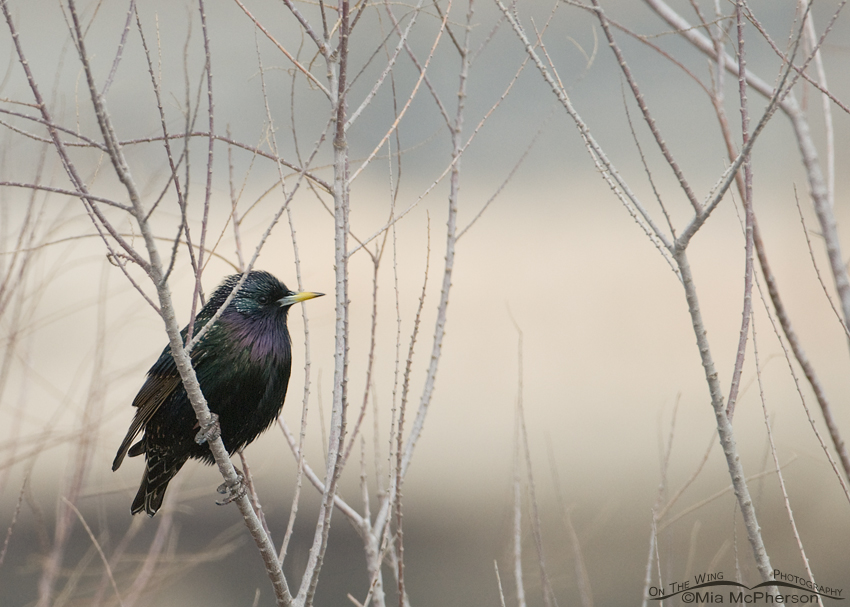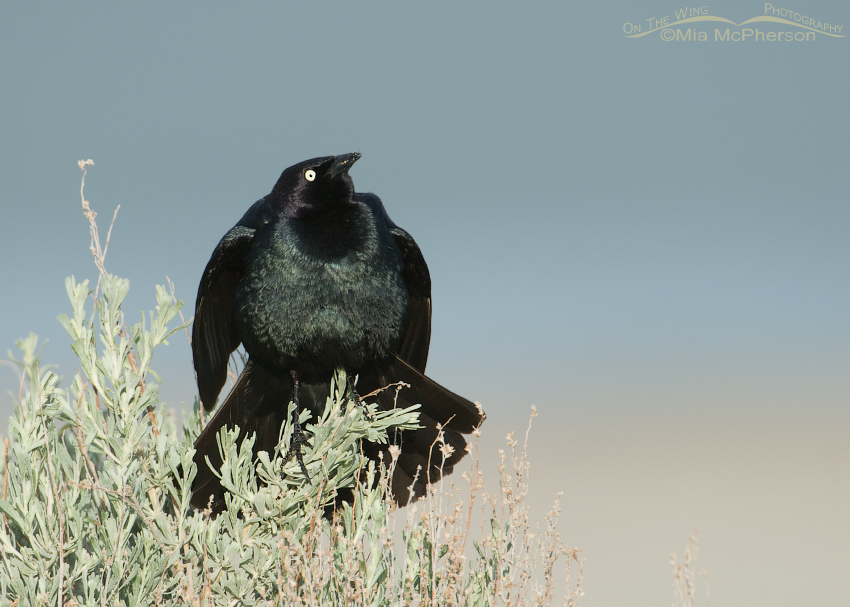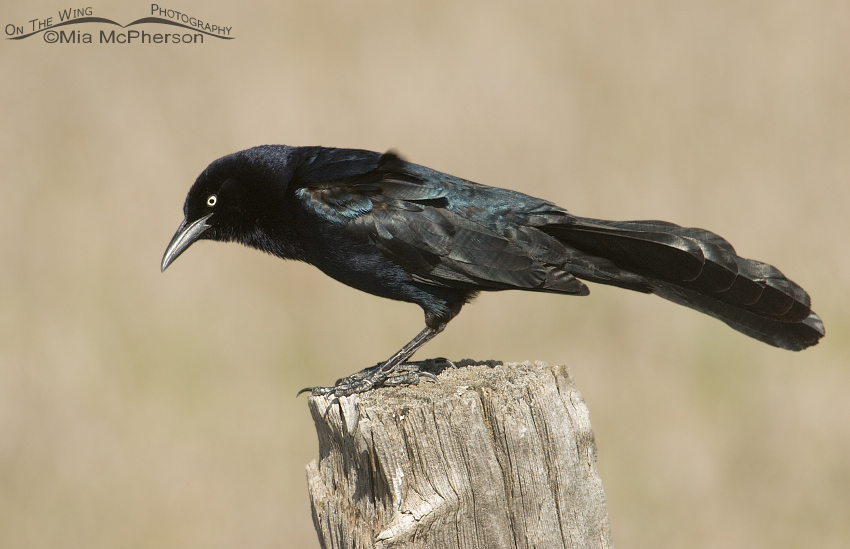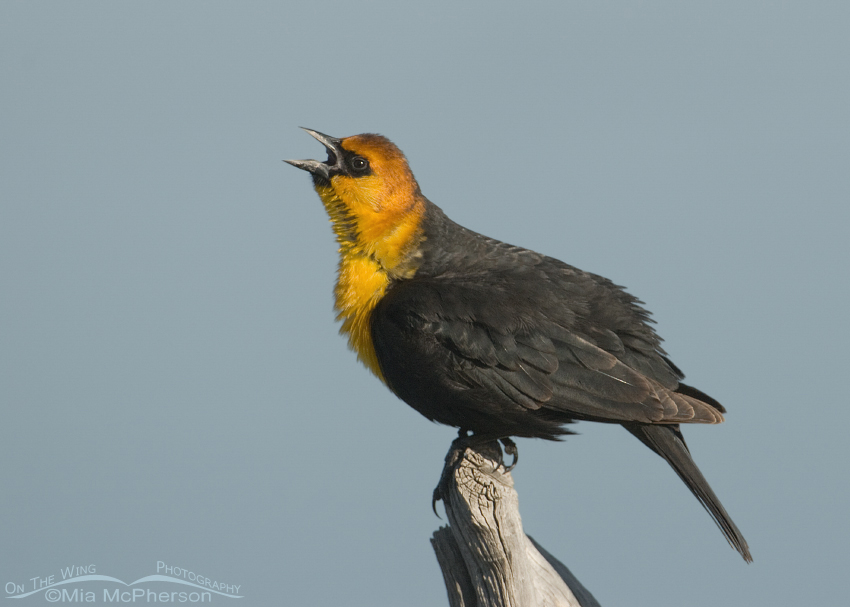The USDA is killing birds with DRC-1339
The USDA recently admitted to being at fault for a lesser die-off in South Dakota, which exposed a little-known program called “Bye bye Blackbird” that makes use of DRC-1339, a poison also known as an avicide. I didn’t see the evening news highlight this program nationally.
 Adult European Starling (Sturnus vulgaris) Salt Lake County, Utah Nikon D200, f5.6, 1/1000, ISO 400, +0.3 EV, Nikkor 200-400mm with 1.4x TC at 260mm, natural light
Adult European Starling (Sturnus vulgaris) Salt Lake County, Utah Nikon D200, f5.6, 1/1000, ISO 400, +0.3 EV, Nikkor 200-400mm with 1.4x TC at 260mm, natural light
The USDA Wildlife Services program “Bye bye Blackbird” targets blackbirds, starlings, grackles, cowbirds, and pigeons.
A little about European Starlings: I don’t think it’s the fault of the bird; rather, I think the people who brought this species to Central Park in New York in 1890 and 1891 should bear some of the guilt. Few people in North America enjoy European Starlings.
European starlings traveled from the Atlantic coast to the Pacific in just 60 years, and the population that started at just 100 birds is now estimated to be over 200 million. For food and nesting places, they do face competition from native species.
 Brewers Blackbird (Euphagus cyanocephalus) male singing, Antelope Island State Park, Davis County, Utah Nikon D200, f7.1, 1/350, ISO 400, -0.3 EV, Nikkor 200-400mm VR with 1.4x TC at 400mm, natural light
Brewers Blackbird (Euphagus cyanocephalus) male singing, Antelope Island State Park, Davis County, Utah Nikon D200, f7.1, 1/350, ISO 400, -0.3 EV, Nikkor 200-400mm VR with 1.4x TC at 400mm, natural light
Red-winged Blackbirds, Yellow-headed Blackbirds, Brewer’s Blackbirds, the less common Tricolored Blackbird, and the more uncommon Rusty Blackbird are among the target species of blackbirds. The depredation order is presently being reviewed due to potential effects on the Rusty Blackbird’s declining population.
 Brown-headed Cowbird (Molothrus ater) male, Antelope Island State Park, Davis County, Utah Nikon D200, f6.3, 1/640, ISO 250, +0.3 EV, Nikkor 200-400mm VR with 1.4x TC at 400mm, natural light
Brown-headed Cowbird (Molothrus ater) male, Antelope Island State Park, Davis County, Utah Nikon D200, f6.3, 1/640, ISO 250, +0.3 EV, Nikkor 200-400mm VR with 1.4x TC at 400mm, natural light
The Bye bye Blackbird initiative also targets cowbirds; three species are at risk: brown-headed cowbirds, shiny cowbirds, and bronzed cowbirds. The majority of North America is home to Brown-headed Cowbirds, whereas Shiny and Bronzed Cowbirds are more restricted to particular regions.
 Great-tailed Grackle (Quiscalus mexicanus) male, Farmington Bay WMA, Davis County, Utah Nikon D200, f7.1, 1/640, ISO 400, Nikkor 200-400mm VR with 1.4x TC at 400mm, natural light
Great-tailed Grackle (Quiscalus mexicanus) male, Farmington Bay WMA, Davis County, Utah Nikon D200, f7.1, 1/640, ISO 400, Nikkor 200-400mm VR with 1.4x TC at 400mm, natural light
The “Bye bye Blackbird” program also targets three species of grackles: Common Grackles, Boat-tailed Grackles, and Great-tailed Grackles. The most widespread species in the United States is the common grackle; great-tailed grackles are found in the southwest; and boat-tailed grackles appear to prefer living near the east coast.
 Adult male Yellow-headed Blackbird (Xanthocephalus xanthocephalus) male singing, Farmington Bay WMA, Davis County, Utah Nikon D200, f7.1, 1/800, ISO 400, +0.7 EV, Nikkor 200-400mm VR with 1.4x TC at 400mm, natural light
Adult male Yellow-headed Blackbird (Xanthocephalus xanthocephalus) male singing, Farmington Bay WMA, Davis County, Utah Nikon D200, f7.1, 1/800, ISO 400, +0.7 EV, Nikkor 200-400mm VR with 1.4x TC at 400mm, natural light
Blackbird, Cowbird, and Grackle
No open season is observed for blackbirds, cowbirds, or grackles. A year-round depredation order under federal law permits the taking of those species as specified in 50 CFR Part 21.
FAQ
Can I shoot a black bird?
Are black birds protected?
Can you get rid of blackbirds?
Why do I have so many blackbirds in my yard?